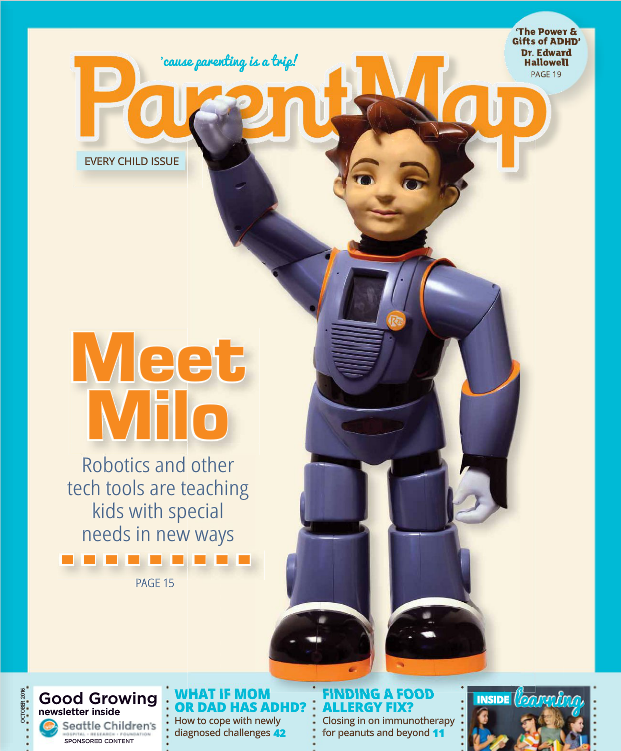Robotics and other tech tools are teaching kids with special needs in new ways
By Rebecca Hill
In many ways he looks like a typical teenage boy: T-shirt and glasses, close-cropped hair and a casual smile. But when 14-year-old Cole sits down at a table with a therapist named Danielle and she begins speaking to him, Cole’s eyes quickly drift away. While Danielle tries to talk with him and keep his attention, Cole gazes off to the side and fiddles his fingers, not meeting her gaze.
Later, when Cole sits down across from a new friend named Milo, things are very different. Cole’s eyes are glued to Milo’s. He leans in, he nods, he answers Milo’s questions, raising his eyebrows and widening his eyes. When Milo lifts his arm in the air, so does Cole, never losing eye contact, a mirror of engagement.
Milo is a robot.
Two feet tall with a shock of chocolate brown hair and a friendly, open face, and wearing a gray spacesuit and clunky shoes, Milo is programmed to speak 20 percent slower than most humans and to prep his friends with explanations of what is coming next.
“Today we are going to learn about saying ‘Hi!’ Smile and say ‘Hi!’” he says in a video from RoboKind, Milo’s manufacturer.
Milo and other similar adaptive and robotic technologies are rapidly becoming key tools in improving learning for kids who have autism, like Cole. With the patience to repeat things as many times as necessary without frustration, and the programming to adapt to the needs of his young human friends, Milo helps kids emotionally and socially connect and interact. Within this new landscape, technology is helping kids in therapy, in school and in life.
